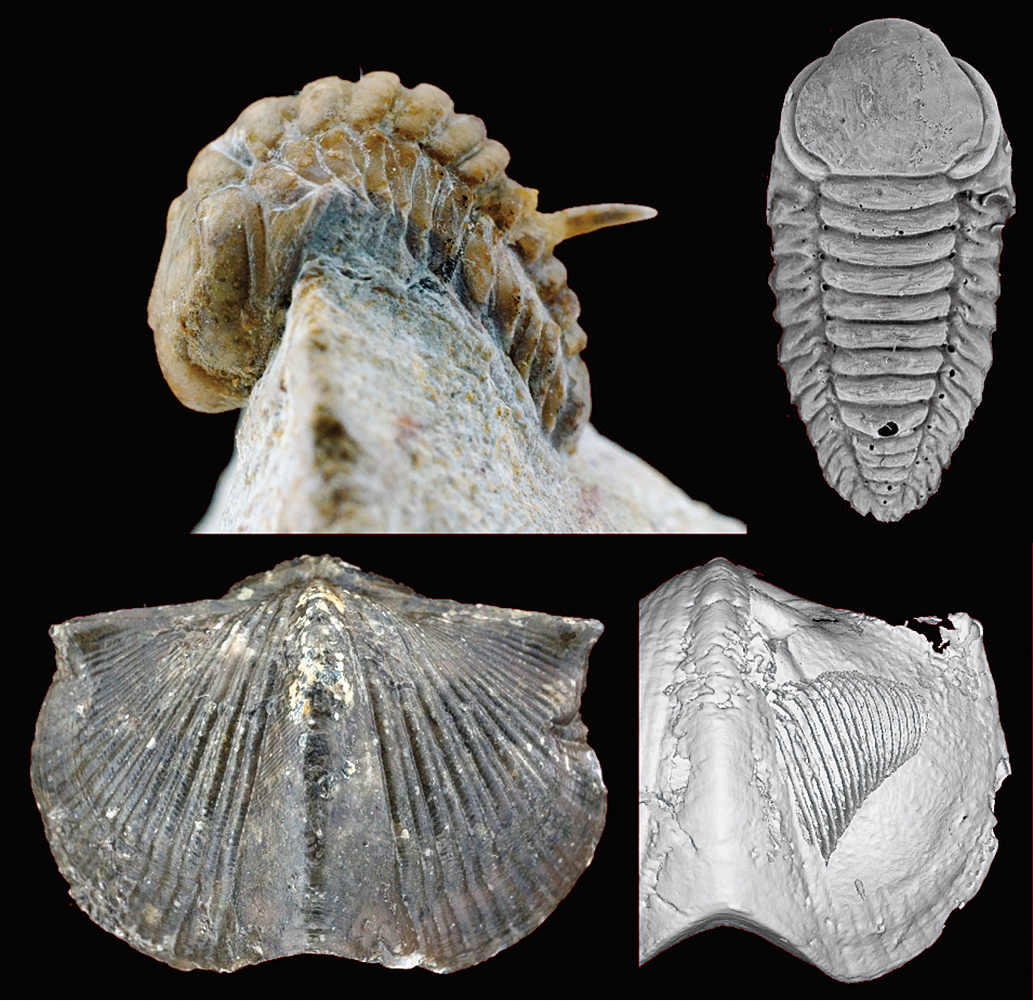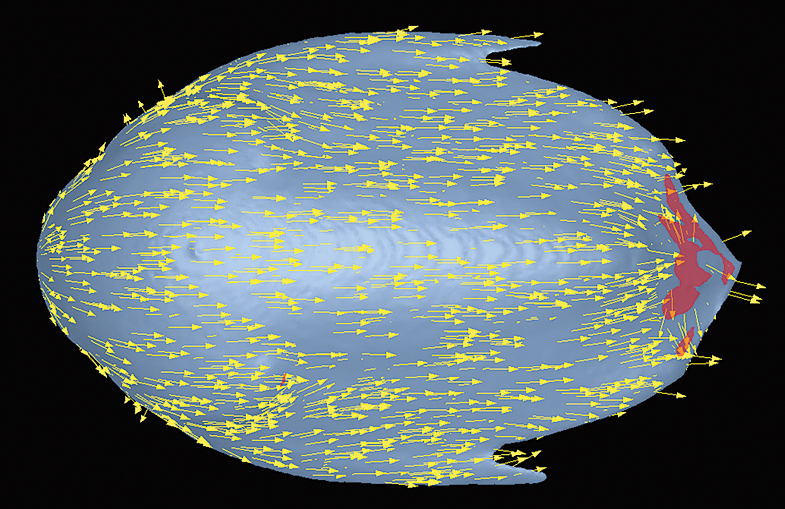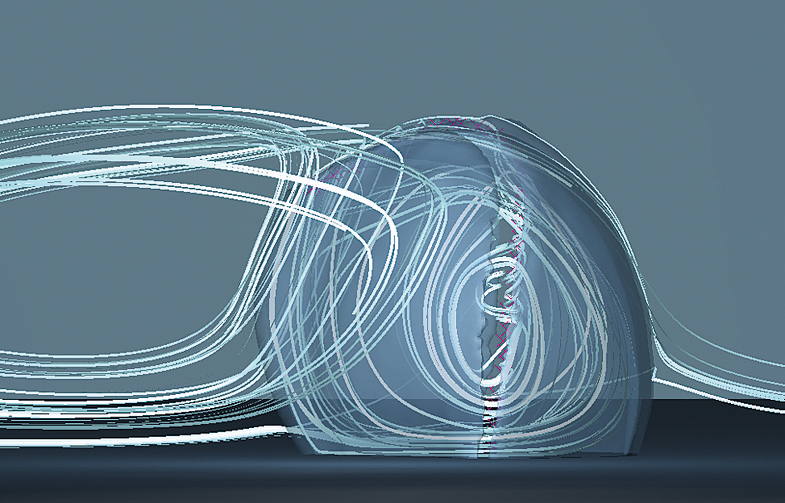B13
Spiriferide brachiopod and swimming trilobites
exploring fossil functionality
In contrast to the modern “normality” in animal shapes, fossil skeletal invertebrates during the Palaeozoic era (540-250 million years ago) exhibit bizarre appearances that are unimaginable for their biological performances. Of these, trilobites and brachiopods were successful in the ancient sea, which dramatically diversified around the world. Trilobites are the group of arthropods, the appearance that resembles “pill bug”. Almost trilobites have a walking mode of life, while some acquired a swimming capability to utilise the seawater column. Displayed specimens, Remopleurides and Hypodicranotus, provide the great examples of swimming trilobites with sophisticated exoskeletons (Shiino et al., 2012). Their compound eyes consist of thousands of tiny lenses, each with approximated 50 µm, eventually enhancing the visual ability. It is the functional requirement for high-speed swimming. Brachiopods are benthic animals with two valves, encapsulated soft parts. They look like clams at a glance, but are taxonomically different. It is noteworthy that they have the tentaculate organ inside the shell to sieve small food particles from the seawater. Hydrodynamic analyses revealed the functionality of an extinct brachiopod Paraspirifer whose shell could generate spiral feeding flows to do nothing but “cast adrift” on the sea bottom (Shiino et al., 2009). Surprisingly, Paraspirifer has a pair of spiral feeding organs, which is advantageous for the filtration from the spiral flows. Trilobites and brachiopods seem to provide opposite directions of adaptive strategy in a way of dynamic or static lifestyle, respectively. Nevertheless, they may share an evolutionary scenario of morpho-functional optimisation to ensure the integration of biological performances. (Yuta Shiino)
References
佐々木猛智・伊藤泰弘(編)(2012)『東大古生物学―化石からみる生命史』東海大学出版会。
椎野勇太(2014)『凹凸形の殻に隠された謎―腕足動物の化石探訪』東海大学出版会。
Shiino, Y. et al. (2009) Computational fluid dynamics simulations on a Devonian spiriferid Paraspirifer bownockeri (Brachiopoda): Generating mechanism of passive feeding flows. Journal of Theoretical Biology 259: 132–141.
Shiino, Y. et al. (2012) Swimming capability of the remopleuridid trilobite Hypodicranotus striatus: Hydrodynamic functions of the exoskeleton and the long, forked hypostome. Journal of Theoretical Biology 300: 29–38.
Shiino, Y. et al. (2014) Pelagic or benthic? Mode of life of the remopleuridid trilobite Hypodicranotus striatulus. Bulletin of Geosciences 89(2): 207–218.



